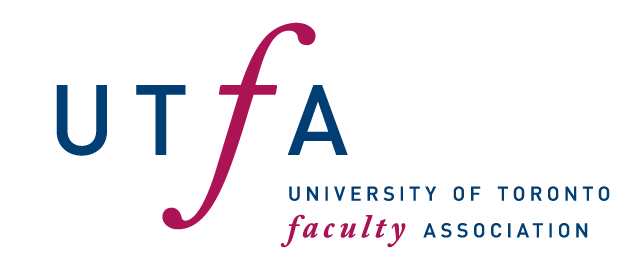UTFA President’s Blog
Cynthia Messenger
October 16, 2018
Over the coming weeks and months, in this blog I will focus on pensions: the current defined benefit (DB) pension plan; the proposed University Pension Plan (UPP), a jointly sponsored, multi-employer DB plan; and the Supplementary Account Plan (SAP) that UTFA is negotiating for higher earners. Please watch this space for short pieces on these important topics.
Some facts and figures on the current pension plan:
It is important to remember that the U of T pension plan currently includes faculty and librarians (approx. 3200) but also members of the Steelworkers (approx. 4300 members), members of other unions, including CUPE, and unrepresented employees.
Below I quote from the Pension Fund Master Trust (legal name “University of Toronto Master Trust”) Statement of Investment Policies and Procedures, May 30, 2018.
“As of July 1, 2017, the University of Toronto Pension Plan had 10,247 active members, 5,867 retired members, 3,187 deferred vested members, and 154 members with exempt or pending status. The average age of active members was 47.3 years, average service was 11.7 years, and average pay was $102,701. As of July 1, 2017, the market value of assets of the plan was $4,698.2 million versus going concern accrued liabilities of $5,060.6 million. Total current service contributions for the year beginning July 1, 2017 are calculated to be $193.3 million and pension payments to pensioners for the year ending June 30, 2017 were $197.1 million. With special payments to amortize the funding shortfall, contributions are expected to exceed benefit payments for the foreseeable future.”
[Update as of September 2018: 10,336 active members]
The full pdf from which the quotation was taken:
https://finance.utoronto.ca/wp-content/uploads/SIPP2018.pdf
____________________
Going Concern and Solvency Valuations:
Below I quote from University of Toronto Pension Plan Annual Financial Report For the Year Ended June 30, 2017.
“The Assets
The amount of money that has actually been set aside (the assets) comes from only two sources: 1) contributions from members and from the University (including transfers in from other plans), and 2) investment earnings. The pension plan financial statements report the assets at fair value (which is essentially market value) at June 30.”
. . . . . . . . . . . . . . . . . . . . . . . . . . . . . . . . . . . . . . . .
1. “Various financial reporting and regulatory requirements result in four types of valuations that make different assumptions and that produce very different results. Under these different types of valuations, the liabilities can change dramatically. However the assets are normally valued at fair value as of the date of valuation, with some very minor adjustments made to asset values for different types of valuations. Here are the similarities and differences between each type of valuation.
Going Concern Actuarial Valuation:
This valuation assumes that the pension plan is a going concern. This means that it is expected to be continuing to operate for the foreseeable future. Assumptions that determine the net present value of the benefits are long-term. Assets are valued at the fair value as of the date of valuation as reported on the audited financial statements. This valuation is done for a single point in time, as of July 1 each year, and is used for purposes of funding the pension plan.
Solvency Actuarial Valuation:
This valuation varies from the going concern valuation in that it assumes the plan will be wound-up on the valuation date and uses a market interest rate assumption. It assumes that benefits will be settled through purchase of annuities or payment of lump sum values. However, indexation (inflation) after termination or retirement is excluded from the liability calculation, in accordance with regulation. This valuation utilizes the audited fair value of the assets as reported on the audited financial statements, and adjusts that audited value with a provision for hypothetical wind-up costs. This valuation is done on the plan year, as of July 1 each year. To the extent there is a deficiency under a filed solvency valuation, additional funding may be required.
Hypothetical Wind-up Actuarial Valuation:
This valuation takes the solvency valuation and provides for the indexation that occurs before and after retirement. It also assumes that benefits will be settled through purchase of annuities or payment of lump sum values. And it also adjusts the audited fair value of the assets with a provision for hypothetical wind-up costs. This valuation is done on the plan year, as of July 1 each year.”
. . . . . . . . . . . . . . . . . . . . . . . . . . .
End of quoted text.
The link to the document from which the above is quoted:
https://finance.utoronto.ca/wp-content/uploads/2017/12/2017p.pdf
Please note that jointly sponsored pension plans in Ontario are NOT subject to solvency actuarial valuation.
__________________
